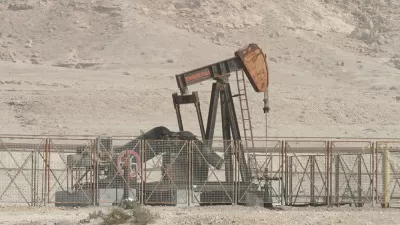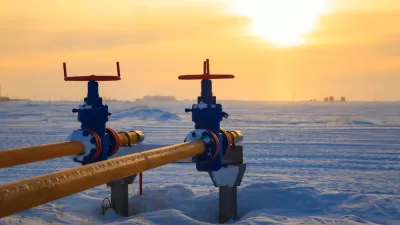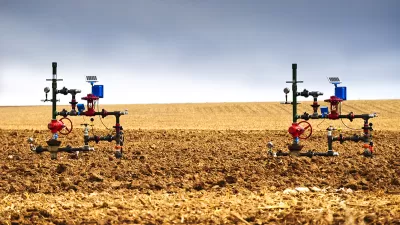The petroleum industry-friendly Trump Administration has awarded $15.8 million to 30 projects that are intended to substantially reduce oil consumption from passenger vehicles.

"The Department of Energy recently awarded about $15.8 million for 30 new research projects that it said are 'aimed at discovery and development of novel, low-cost materials necessary for hydrogen production and storage and for fuel cells onboard light-duty vehicles'," reports AASHTO Journal on July 7.
The DOE's Fuel Cell Technologies Office [a division under the Office of Energy Efficiency and Renewable Energy] selected projects for the awards, in line with department goals of "enabling economic and efficient transportation via fuel cell electric vehicles that use hydrogen fuel produced from diverse domestic resources."
The DOE announcement, made June 8, indicates that fuel cell electric vehicles "consume 95% less petroleum per mile than conventional internal combustion engine vehicles, have no tailpipe emissions, and offer quiet operation."
What's surprising is that the administration would even consider reducing oil consumption to be a benefit considering their interest in rolling back fuel economy standards. The Trump Administration's main energy goal is clearly boosting oil production, illustrated by a July 6 order [pdf] by Interior Secretary Ryan Zinke to "to speed oil and gas permitting on public lands with 30-day reviews," report Dino Grandoni and Juliet Eilperin for The Washington Post.
According to the energy department, "[m]ore than 2,000 fuel cell vehicles have been sold or leased in the U.S. since 2015." With the Toyota Mirai now available for sale or lease, expect to see more on the road in California which has a developing network of hydrogen refueling infrastructure. Also see:
- Planetizen, April 14: More Fuel Cell Vehicles for Lease in 2017: Fuel cell electric vehicles are gaining a following in California, but nowhere else in the U.S. for the simple reason that almost all hydrogen fueling stations are located in the Golden State. Sales, or leases, are expected to jump this year; and
- Planetizen, May 22: Northeast is Next Market for Fuel Cell Vehicles.
FULL STORY: DOE Awards $15.8M for 30 Projects Aimed at Hydrogen Fuel Cells for Light-Duty Vehicles

Maui's Vacation Rental Debate Turns Ugly
Verbal attacks, misinformation campaigns and fistfights plague a high-stakes debate to convert thousands of vacation rentals into long-term housing.

Planetizen Federal Action Tracker
A weekly monitor of how Trump’s orders and actions are impacting planners and planning in America.

San Francisco Suspends Traffic Calming Amidst Record Deaths
Citing “a challenging fiscal landscape,” the city will cease the program on the heels of 42 traffic deaths, including 24 pedestrians.

Defunct Pittsburgh Power Plant to Become Residential Tower
A decommissioned steam heat plant will be redeveloped into almost 100 affordable housing units.

Trump Prompts Restructuring of Transportation Research Board in “Unprecedented Overreach”
The TRB has eliminated more than half of its committees including those focused on climate, equity, and cities.

Amtrak Rolls Out New Orleans to Alabama “Mardi Gras” Train
The new service will operate morning and evening departures between Mobile and New Orleans.
Urban Design for Planners 1: Software Tools
This six-course series explores essential urban design concepts using open source software and equips planners with the tools they need to participate fully in the urban design process.
Planning for Universal Design
Learn the tools for implementing Universal Design in planning regulations.
Heyer Gruel & Associates PA
JM Goldson LLC
Custer County Colorado
City of Camden Redevelopment Agency
City of Astoria
Transportation Research & Education Center (TREC) at Portland State University
Jefferson Parish Government
Camden Redevelopment Agency
City of Claremont





























